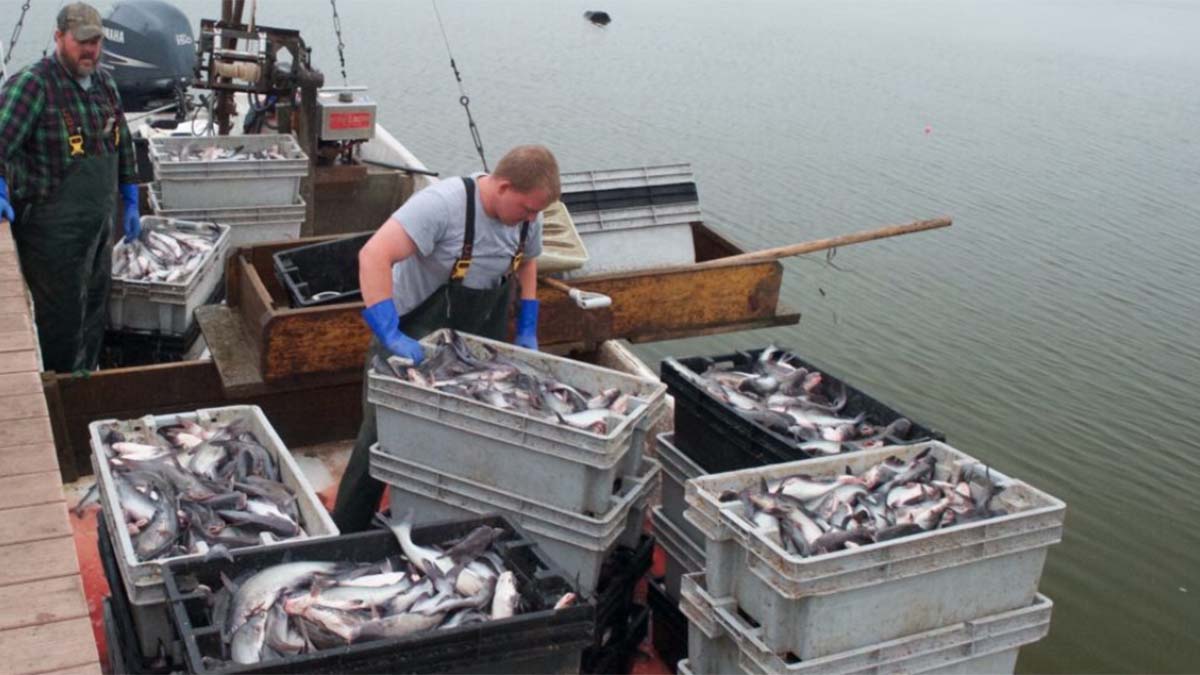Gov. Glenn Youngkin has awarded the first round of funds to help Virginia eat its way out of the problem of too many invasive blue catfish in the Chesapeake Bay watershed.
Last Monday, Youngkin awarded a $250,000 grant to Sea Farms, a family-owned and -operated aquaculture and seafood processing business with operations in Gloucester and Mathews counties, that among other uses will pay for a blast freezer that will increase the amount of blue catfish the company can buy and sell.
This story was reported and written by our media partner The Virginia Mercury
“The blue catfish has become abundant in Virginia waterways and this increased processing capacity will bring more catfish to markets and restaurant tables up and down the East Coast,” Youngkin said in a statement. “I encourage all Virginians to give this nutritious fish a try.”
Blue catfish have become an increasing problem in Virginia waters since they were first introduced to tidal and freshwater rivers in the 1970s. The species is considered invasive and eats anything from crabs to shad to itself. The state record for the largest catfish caught is one that weighed 143 pounds.
A recent report from the James River Association scored the health of the shad population in the James River at 0 out of 100 due in part to the predatory nature of catfish. The group recommended the U.S. Food and Drug Administration create a regulation for blue catfish processing that isn’t as “costly and cumbersome” as the current U.S. Department of Agriculture oversight process.
“Predation by non-native catfish is simply another hurdle for shad on their gauntlet run through the James River,” the JRA’s website states.
In response to the catfish problem, legislation last year from Del. Keith Hodges, R-Middlesex, created the Governor’s Blue Catfish Processing, Flash Freezing, and Infrastructure Grant Program to reimburse businesses for the costs of processing and flash freezing catfish. At the time the fund was created, Virginia was home to only two blue catfish processing facilities.
“The award not only benefits Sea Farms, but also local watermen who currently limit their catch due to limited processing availability,” said Secretary of Agriculture and Forestry Matthew Lohr in a statement.
Sea Farms received the award after the Virginia Department of Agriculture and Consumer Services accepted seven applications for the first round of funding during a one-month period starting near the end of October.
This year, Hodges is furthering those efforts with another bill that advanced out of the House Committee on Appropriations Friday.
This year’s bill, along with a similar one from Sen. Richard Stuart, R-Westmoreland, would order a review of Virginia’s efforts to create a blue catfish market, potential sectors it could serve and actions the state can take to expand it.
The group would include members of state agencies, conservation groups and the Department of Corrections, which has a flash freeze plant for traditional agriculture products at their Deerfield facility.
“We need to really establish a market,” said Hodges. “It is absolutely delicious, and I’ll put it up against anything in the Bay.”
Several conservation groups and the Upper Mattaponi Tribe spoke in support of Hodges’ latest legislative proposal last Monday.
“I certainly didn’t come here to speak on this bill,” Chief Frank Adams said in testimony, “but since I’ve grown up on the Mattaponi and Pamunkey rivers fishing and hunting everything else, I’ve noticed a great decline in all the other species of fish that kept us alive 400 years ago because of this blue catfish.”





